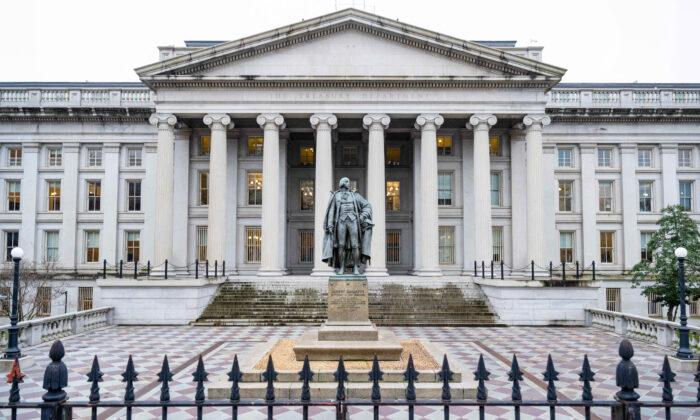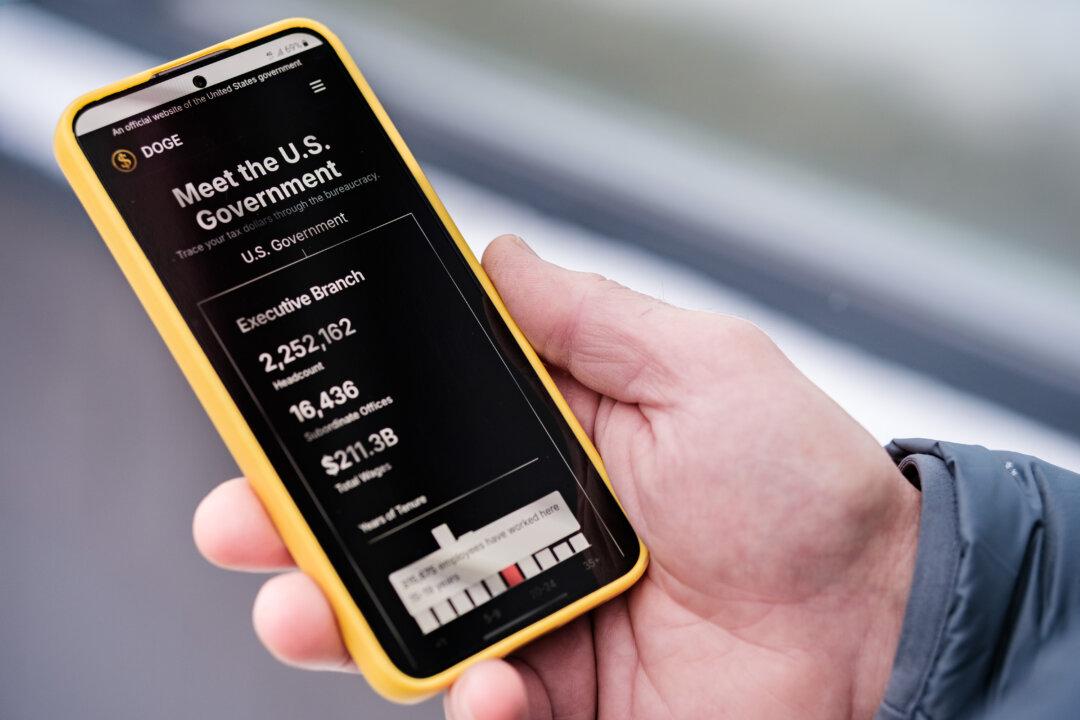We have passed the point of no return with regard to our national debt. From here, we enter a dangerous and spiraling vortex.
The U.S. government is running a multitrillion-dollar deficit, which can be funded only by additional debt. This was manageable so long as interest rates remained near zero. But, now, interest rates are pushing above 5 percent. As a consequence, debt service costs are growing faster than they can be paid for, and they can be funded only by running deficits and piling on yet more debt in a vain attempt to cover them.
When a government takes out a bond to build a road, bridge, or highway, the toll—as well as the future productivity of that infrastructure—enables economic growth and thus the revenues to repay it. But that isn’t what’s happening here. The deficit represents unproductive and massive social entitlements, as well as destructive armaments spending that’s being squandered on endless wars in Ukraine and elsewhere. Neither of these will have a positive return on investment.
The U.S. government now must raise nearly $2 trillion in debt financing from the bond markets by the end of 2023. The U.S. Treasury has been forced to offer record yields in recent public auctions to induce bond investors to bite. Even still, the market for Treasurys is showing signs of indigestion. The fact that the United States has no hope of ever repaying the debt, other than with more debt, is finally catching the attention of the markets. This is a problem for the U.S. government and for the U.S. economy.
The recent downgrade by credit ratings firm Fitch of the U.S. sovereign debt rating, to AA+ from AAA, underscored the point. With federal obligations of nearly $33 trillion, and interest rates now expected to be “higher for longer,” the cost of servicing the interest on the national debt will add much more than $1 trillion per year to the deficit and, ultimately, to the debt balance. Vicious cycle ensues.
It would be one thing if there were sufficient tax revenues to service the debt. But the economy isn’t growing quickly enough, and tax receipts are down year over year. There’s no prospect whatsoever that this debt can be paid off.
As U.S. debt becomes a less attractive option to investors, the Federal Reserve will be forced to monetize the debt, i.e., to act as the buyer of last resort of U.S. Treasury securities. This it did in 2020–2021, when the Federal Reserve doubled the size of its balance sheet to nearly $9 trillion. A new round of monetization will lead to an increase in the money supply, which in turn will increase the inflationary pressures already bubbling in the economy. Already, the Consumer Price Index (CPI) has reverted upward, with July’s headline figure coming in at 3.2 percent, while core CPI (excluding food and energy) was substantially worse at 4.7 percent.
At some point—perhaps with the next, more serious leg of the banking crisis, or perhaps when the U.S. government starts to wobble under the payments strain—the Fed will have to substantially ease up on interest rates, which will remove whatever restraints that rising interest rates have served to moderate inflation. At that point, rapidly growing debt alongside lower interest rates will lead to an inflationary spiral.
The U.S. Congress had the opportunity to address this crisis when the debt ceiling was being negotiated in May. Unable to reach agreement, the parties kicked the can down the proverbial road until 2025. By then, the national debt will have increased by several trillion dollars more, and inflation will have gained the upper hand. Any solution will by then require more pain, not less.
This spiraling process of runaway deficits leading to more debt leading to higher inflation from monetary expansion is a “doom loop.” Now that we’ve entered it, how do we get out? Only by the severest of measures to cut deficit spending, which is an option that neither political party will have the courage to take. The United States can neither default nor can it tax away the problem.
That leaves inflation as the only remaining path. So, instead of price stability, we can expect to see inflation return with a vengeance as the Fed is forced to reverse course on interest rates.







